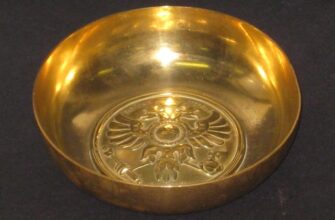According to the results of a survey conducted during a year by the largest global travel site TripAdvisor Inc (headquartered in USA), the Swedish Vasa Museum occupies the 10th place in the global ranking of museums in 2016. The rating was based on the number and quality of reviews about museums in different countries of the world.
The Museum was created on the basis of the remains of a large military ship-palace, built at the behest of Gustav Adolf II and named after the ruling dynasty of the Swedish kings of the VASA (or Vasa). In 1628 he left the harbour of Stockholm and sank. In 1961 it was extracted from the bottom and turned into a Museum in 1990.
The magazine «E Vesti» addressed to the Museum in order to know the opinion of the Museum on the reasons for its attractiveness among tourists and the main attractions of the Museum.
Martina Siegrist Larsson in her to «E Vesti» kindly answered our questions as follows.
E Vesti: Your museum is in the TOP-10 Museums in the World according to TripAdvisor.
Martina Larsson: Yes, for the second year in a row we have been ranked as one of the ten most popular museums in the world. It is amazing and we are very proud and honoured that the TripAdvisor travellers give us such fantastic reviews.
EV: Could you tell me, how would you explain your popularity among other museums?
Martina Larsson: The Vasa Museum is a quite unique and different museum in the sense that it all basically is about one object. And the object is also unique – a nearly 400 year old ship, 98 % original, that has spent most of its time (333 years) on the seabed. The object also has a very different and maybe unique history, compared to other ships – it sank on its maiden voyage after a very short journey of only about 1300 metres in the middle of a capital (Stockholm).
Another unique part of its story is that it could be salvaged – that there in the 1950’s-1960’s was a willingness, when it came to technology, money and people, to pick up an old wreck from the seabed. There were of course people that were against it, that thought it was crazy to lift up an old wreck, but the “project leader” Mr. Anders Franzén, Vasa’s discoverer, was convinced that it was a good idea and he managed to inspire and persuade many people that it was important and would be worth it.
Two very important factors were 1) Vasa sank intact, without any damages from for example war or battles, and 2) the waters of the Baltic sea preserve wooden objects in a fantastically good shape for centuries because there is no shipworm (so called Teredo Navalis) that attacks wood. The water in the Baltic is brackish – a mixture of sweet and salt water – and there is too little salt for the shipworm; it cannot exist in the Baltic. In other seas and oceans for example the Atlantic the waters are saltier and contain shipworms which “eat up” wooden objects.
One more important factor is that Vasa is an object that basically everybody can relate to. It is a ship, something that even small children can understand.
And last but not least: Everyone who sees Vasa gets touched by it. Most visitors say “Wow!” when they see it, most of them in positive way. Some visitors think that it is crazy that we chose to show a failure in a museum. But it creates a reaction in everyone, in a positive or negative way.
EV: What are your plans for this year? What activities can you recommend to visit?
Martina Larsson: Our plan for this year is to continue to offer our visitors our different activities – films, guided tours, audioguides and more in different languages, among them Russian. We always recommend our visitors to do at least one of those three, but preferably more. Please read more about our offers here.
We also recommend to take a look at our exhibitions that surround the ship on the different floors in the museum; they all tell about topics connected to the ship and its time, the early 1600’s. Please see here.
EV: When would you recommend to come to your museum?
Martina Larsson: We are open 361 days a year (only closed 4 days a year – 23-25 December and 1 January), and we recommend a visit at any time. The area where the museum is located, the island of Djurgården, is just as beautiful in spring, summer, autumn and winter.
EV: If you could turn to Russian tourists, so what you tell them?
Martina Larsson: That we are a museum for both adults and children. We show the ship Vasa from 1628 and tell about its fascinating and unusual history, and about life in Sweden and the Baltic sea at Vasa’s time, our common history.
For Russian visitors there is a lot information in Russian – for example a documentary about Vasa, a film for children (during some periods of the year), an audioguide, a family trail for children to do on their own together with an adult, signs and information leaflets.
We also offer some brief information in Russian on our website.




